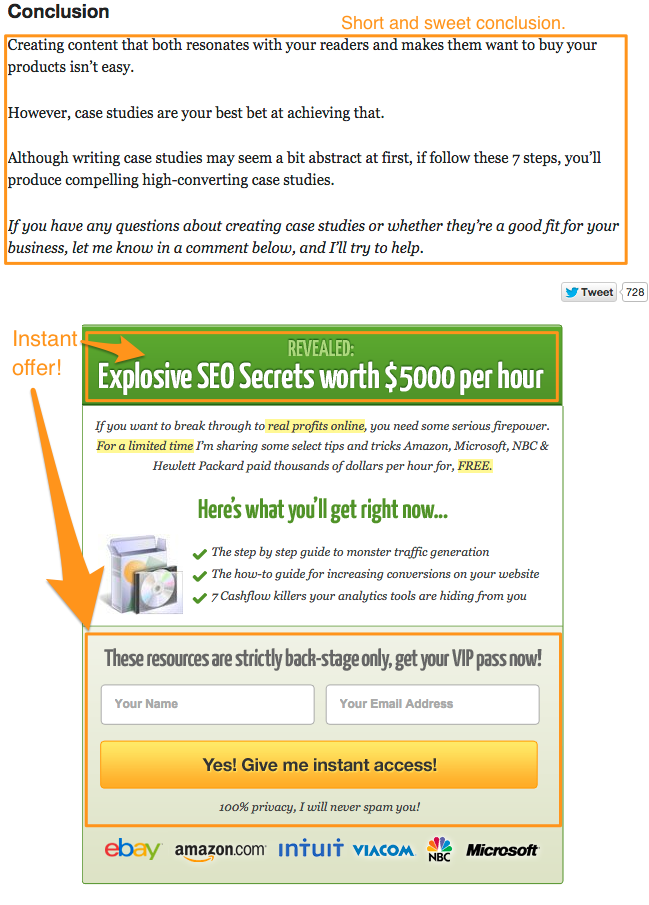4 Steps to Maximizing B2B Lead Generation Via Your Blog

As a B2B marketer, lead generation should be a top priority. Leads offer a crucial first opportunity to develop personal relationships with potential clients. Last year, B2B marketers identified both lead generation and improving the quality of leads generated as two of their top three priorities.
Improving both aspects of inbound marketing is a complex process. But, in addition to components like your landing page, you can rely on another content tool to help you optimize them. Here are 5 steps you can take to optimize B2B lead generation via your blog
Target Audience Pain Points
Your prospects are searching for answers. They might be in the beginning stages of learning about their problem and just want information. Or they might be considering specific solutions to their problen.
Either way, it is your job as a marketer to address your prospect's pain points. When you create content that addresses their pain points, people will start looking at you as a trusted source.
Building credibility and trust with your audience is a critical part of lead generation. (Who wants to buy something from someone they don't trust?)
When you build trust, anonymous prospects will be more likely to sign up for your newsletter or another offer, becoming a lead.
For example, a buyer may look to reduce their operating costs. Publishing a blog post on how they can do just that will get them to read the content; if they find it relevant, they will consider you a credible source. Their chances of signing up for your newsletter or to read a more in-depth piece of content from you increase greatly, because your blog has addressed their pain point.
How do you create content that target's your prospect's needs?
- Create buyer persons that represent your target audience.
- Brainstorm a list of 25-30 blog topics for each buyer persona. Remember, the decision maker isn't always doing the research.
- Create an editorial calendar that includes this content and start publishing!
Include a Singular CTA at the End of Each Blog Post
Once you gain someone's attention enough to read a post, why lose it? You should include a CTA at the end of each blog post that offers a related or supplemental piece of content to the user.
But don't overwhelm users with a list of 10 different things to check out. Offer one piece of curated content.
Why is that the case? The answer: Attention Ratio. This concept, established by the landing page experts at Unbounce, suggests that every landing page should rely on a singular 'next step' - your attention ratio, in other words, should be 1:1.
Unbounce's research revealed that as soon as you give your audience more than one option to move forward, they will become more likely to take no action at all. And that applies to your blog posts as well. If, for example, you simply show them a list of related articles, chances are they will click on none and navigate away.
Instead, create a CTA that connects directly with the content they read, through an offer that builds on their newly-gained knowledge. If your content is convincing enough for your visitors to want to learn more, they should have only one option to click in order to fulfill their desire: the landing page to become a lead. A singular, compelling CTA can help them get there.

Use That CTA to Tease Gated Content
When you do include a CTA at the end of your blog post, consider making it a CTA that leads to gated content - where you can collect your readers' email information. Studies suggest that B2B buyers do significantly more research about potential products before making a buying decision than their B2B counterparts. Before they become your customers, they need in-depth content that convinces them your company is the best fit for a business relationship.
You could provide all of that information through blog posts. If, however, you want to prioritize lead generation (and the nurturing benefits that come with it), consider 'gating' your most valuable content behind a landing page or sign-up form. That way, interested visitors eager to read the content will become leads.
At the same time, gated content is only valuable if you can promote it efficiently. And as it turns out, a blog offers you the perfect opportunity to do so. Pull out an excerpt from your whitepaper or other type of content, and publish it on your blog. Then, direct readers who are now eager to learn more to the landing page and lead generation form via your singular CTA.
For example, your trucking company may have published a whitepaper that outlines a number of ways to save miles and money when transporting materials. Gate it behind a sign up form, and publish just one of the tips in an SEO-optimized blog post. Then, watch potential clients interested in improving their supply chain efficiency start consistently become leads.
Keep Blogging Consistently
Over time, blogging results in increased web traffic that, if your blogs are optimized for lead generation, turns into a steady stream of inbound leads. But that process does not happen overnight. Instead, establishing a blog can only be successful if you continue to blog on a regular basis.
Benchmark data by HubSpot suggests that especially for B2B marketers, blogging multiple times per week significantly increases web traffic and lead generation. In fact, B2B businesses who blog at least 11 times per month generate almost twice the web visitors and inbound leads, respectively, compared to those who only blog 6-10 times per month. The same correlation holds true for the total number of posts published on a company blog.
Blogging consistently also comes with a number of ancillary benefits. Establish yourself as a valuable resource, and even visitors that didn't convert to leads the first time they read your content will come back with increased value and another opportunity to turn into leads. Regular blogging also helps you nurture warmer leads that may still need a bit more convincing of your value before becoming sales-qualified.
In other words, keep at it. You can use the above tips to optimize your blog for inbound lead generation. But if you stop after a few weeks, you may never get the best possible results.
Maximizing B2B Lead Generation Via Your Blog
Countless websites tout the importance of blogging for lead generation. But to be successful, especially when it comes to generating leads, it needs to be done correctly - and the above five tips can help you optimize your lead generation on your blog.
So we'd like to offer you a challenge: create optimized blog posts for 6 months using the above steps, and compare your visits and lead generation to the previous 6 month period. We'd love to hear what difference it made for you!
